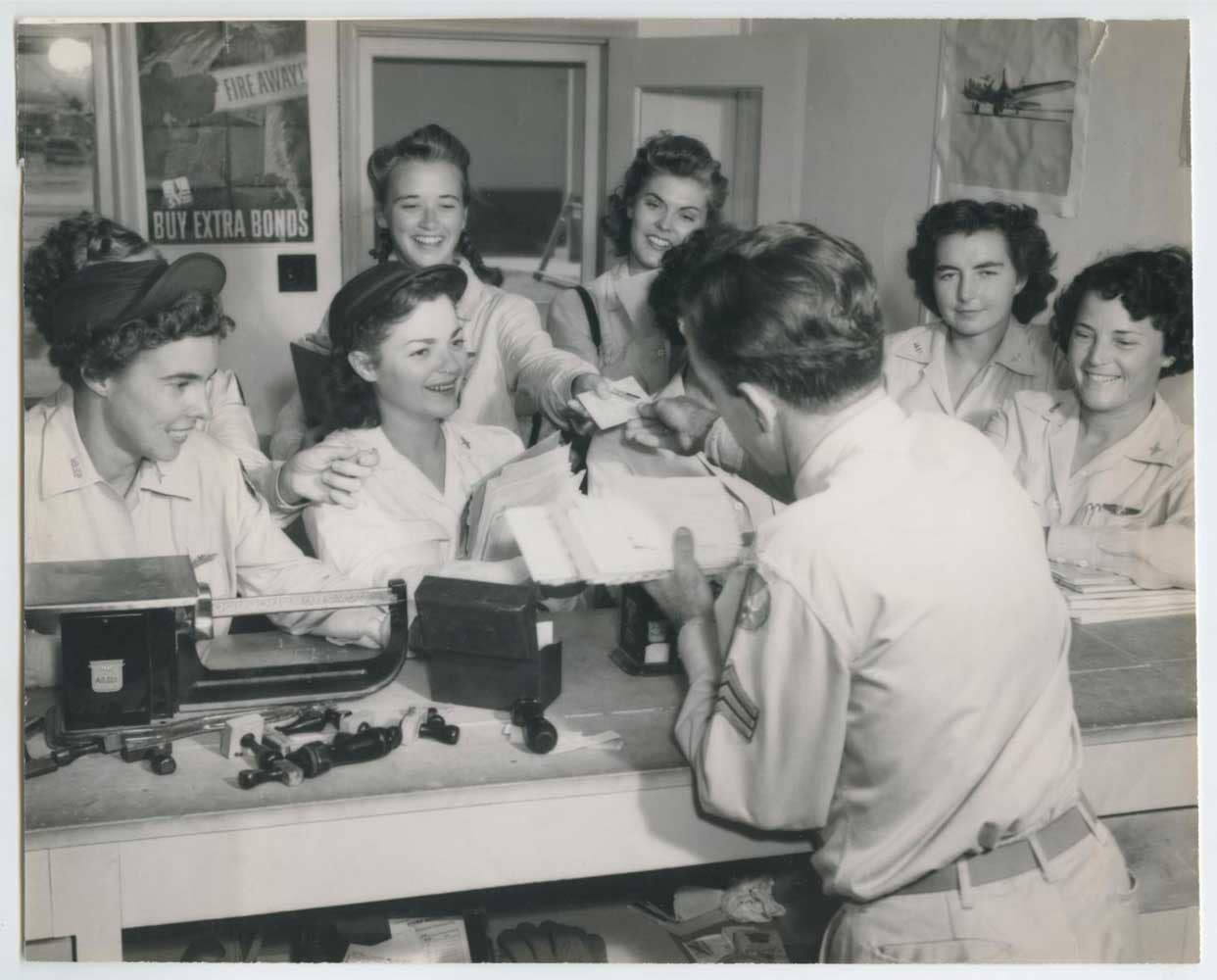Aircraft
AIRCRAFT AT THE WASP MUSEUM
The training equipment at Avenger Field consisted of over 200 airplanes of standard types. The women trained on five aircraft: PT-17, PT-19, BT-13, AT-6, and the UC-78 during their time in Sweetwater. The Museum is proud to have four of these five airworthy trainers in its collection. Visit them at the Museum when they are not at airshows and other events.

Boeing Stearman PT-17 “Kaydet”
Primary Trainer
The Stearman (Boeing) Model 75 is a biplane flown during the 1930s and 1940s as a military trainer aircraft. As the Army PT-17 Kaydet, it served as a primary trainer for the military forces throughout World War II. The PT-17 was a conventional biplane of rugged construction with large, fixed landing gear and tandem open cockpits. WASP Classes began receiving primary training in PT-17s in December 1943. The trainees logged a total of 70 flight hours in the Stearman, primarily at the auxiliary fields. Our PT-17 in fact originated as a Jacobs (R-755) powered PT-18 in October 1940, one of only 150 such planes built. It is properly painted in the original U.S. Army Air Corps trainer paint scheme. The plane was first delivered to the Dallas Aviation School at Love Field, Dallas, Texas before being transferred to the W.F. Long Flying School, Hicks Field. In June 1941, it was transferred to the British Flying Training School (B.F.T.S.) No. 1 at Terrell, Texas, where it was flown in training RAF cadets until being sold as army surplus in June 1945.

North American AT-6 “Texan”
Basic Trainer
The AT-6 evolved from North American’s BT-9 basic trainer built for the United States Army Air Corps in 1935. North American built the AT-6, designated the SNJ by the Navy, from the late 1930s into the 1950s. Re-designated by the United States Air Force as the T-6 in 1948, the Air Force continued employing the plane as a trainer, using the remanufactured T-6G as the primary trainer from 1951 until 1958. Of the 15,495 AT-6/SNJs built by North American, more than 600 remain airworthy today. When asked about their favorite plane flown in training at Avenger Field, WASPs invariably replied, “The AT-6 Texan.” The AT-6 owned and exhibited by the National WASP WWII Museum, is an AT-6D, Army Serial No. 41-34166, built by North American Aviation at Grand Prairie, Texas. This aircraft served in World War II at Luke Field, Arizona, the largest single-engine advanced flight training school in the Army Air Forces.

Vultee BT-13 “Vultee Vibrator”
Basic Trainer
During World War II, the Vultee BT-13 was the basic trainer flown by most American pilots, including the WASP. Basic flight training followed primary training, and it preceded advanced training. The BT-13 was heavier and had twice the horsepower of the primary trainers. It required the student pilot to use two-way radio communications, landing flaps, and a two-position Hamilton Standard propeller. The museum’s BT-13 served the Army Air Forces during World War II at Malden Army Airfield, Malden, Missouri. This BT-13 was sold as army surplus in 1946. The American Aviation Heritage Foundation of Blaine, Minnesota restored this plane over a period of five years and generously donated it the National WASP WWII Museum in memory of WASP Betty Strohfus 44-W-1. The museum flies the BT-13 to multiple air shows throughout the year.

Cessna UC-78 “Bamboo Bomber”
Advanced Trainer
Originally built as the civilian Cessna Model T-50 beginning in 1939, the twin-engine plane was adopted for use by the Army Air Forces as the AT-17 and UC-78 for multi-engine training of pilots expected to become transport or bomber pilots in World War II. It is constructed from “non-strategic” materials consisting of fabric covered tubular steel fuselage and wood wings. Because of its wood construction it was jokingly referred to by pilots as the “Bamboo Bomber.” It contained no bamboo and was never a bomber.
The Cessna UC-78 Bobcat was used by the WASP for multi-engine training. There were as many as forty of the twin-engine trainers at Avenger Field during the summer of 1943. There are only 5 air worthy UC-78s in the world.

